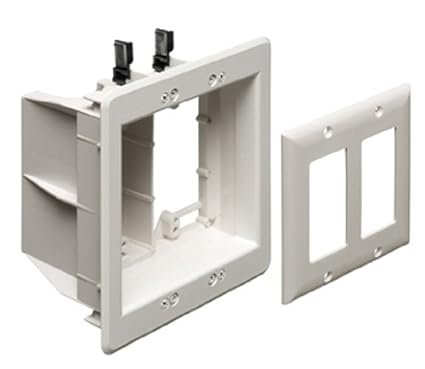I am trying to neaten up some wiring in my ethernet network and have a question for the group.
My Uverse lightspeed router/gateway has one rj11 connector input signal and four rj45 ethernet service ports out the back. In my installation I have port1 homerun to the elk, port2 homerun to the dvr, port3 homerun to an upstairs bedroom and port4 connected to a 16 port switch that is carrying about 8 other devices. I would like to balance the load and neaten up the wiring.
The router is on the ground floor with five cat cables leading to the basement in a wall cavity. One cable comes in from the outside service to the router and four cables out of the router ethernet ports to the basement and onward. All cables are terminated with male plugs and plugged directly into the back of the router.
Now these cables all enter through a rough hole in the wallboard which is what I would like to neaten up. My first thought was to run one cable from one ethernet port in the router to the basement where it would connect to a large switch. Then it occurred to me that this would put the entire load on one router port. Now I realize that it would be better to continue to run all four ethernet cables/ports to the basement and connect to two or more switches in order to balance the traffic.
So my question is: How can I make this neater and more professional? What is the best way to install five RJ type connectors in a wall? I am picturing five RJ type sockets but I don't know how to mount them in the wall.
TIA, Mike.
My Uverse lightspeed router/gateway has one rj11 connector input signal and four rj45 ethernet service ports out the back. In my installation I have port1 homerun to the elk, port2 homerun to the dvr, port3 homerun to an upstairs bedroom and port4 connected to a 16 port switch that is carrying about 8 other devices. I would like to balance the load and neaten up the wiring.
The router is on the ground floor with five cat cables leading to the basement in a wall cavity. One cable comes in from the outside service to the router and four cables out of the router ethernet ports to the basement and onward. All cables are terminated with male plugs and plugged directly into the back of the router.
Now these cables all enter through a rough hole in the wallboard which is what I would like to neaten up. My first thought was to run one cable from one ethernet port in the router to the basement where it would connect to a large switch. Then it occurred to me that this would put the entire load on one router port. Now I realize that it would be better to continue to run all four ethernet cables/ports to the basement and connect to two or more switches in order to balance the traffic.
So my question is: How can I make this neater and more professional? What is the best way to install five RJ type connectors in a wall? I am picturing five RJ type sockets but I don't know how to mount them in the wall.
TIA, Mike.



